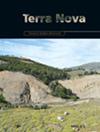从蚀变岩中的lu-hf石榴石年代学看约1.9 Ga Rae-Hearne碰撞
IF 1.7
3区 地球科学
Q2 GEOSCIENCES, MULTIDISCIPLINARY
引用次数: 0
摘要
加拿大北部的陨石坑记录了在多重造山运动作用下复杂的多变质演化过程。斯诺伯德构造带(STZ)是阿基坦瑞氏和赫尔尼氏陨石坑之间的主要缝合线,是一个备受争议的构造;有人认为它在新元古代(2.6-2.5 Ga)或古元古代(约 1.9 Ga)曾容纳了现代风格的增生。为了解决这一争议,我们使用Lu-Hf石榴石地质年代测定了从STZ的东阿萨巴斯卡岩系三角区采集的一块斜长岩的年代。石榴石显示出顺行痕量元素分带,我们得到的年代为 1914.5 ± 3.4 Ma。该年龄被解释为与沿STZ地壳深埋有关的碰撞时间。这有力地支持了古近纪雷伊和赫恩环形山之间的末端碰撞,并证明要确定超大陆组装过程中的高压变质作用,确定辉绿岩本身的年代是关键。本文章由计算机程序翻译,如有差异,请以英文原文为准。
Circa 1.9 Ga Rae‐Hearne collision from Lu–Hf garnet chronology in eclogites
Canada's northern cratons record a complex poly‐metamorphic evolution in response to multiple orogenic events. The Snowbird Tectonic Zone (STZ), the principal suture between the Archean Rae and Hearne cratons, is a highly debated structure; it is argued to have accommodated modern‐style accretion in either the Neoarchean (2.6–2.5 Ga) or Palaeoproterozoic (ca. 1.9 Ga). To resolve this controversy, we use Lu–Hf garnet geochronology to date an eclogite collected from the East Athabasca mylonite triangle of the STZ. Garnet shows prograde trace‐element zoning, and we obtained an age of 1914.5 ± 3.4 Ma. The age is interpreted to date the timing of collision related to deep burial of crust along the STZ. This strongly supports Palaeoproterozoic terminal collision between the Rae and Hearne cratons, and that to constrain high‐pressure metamorphism during supercontinent assembly, dating eclogite itself is key.
求助全文
通过发布文献求助,成功后即可免费获取论文全文。
去求助
来源期刊

Terra Nova
地学-地球科学综合
CiteScore
4.80
自引率
8.30%
发文量
59
审稿时长
2.3 months
期刊介绍:
Terra Nova publishes short, innovative and provocative papers of interest to a wide readership and covering the broadest spectrum of the Solid Earth and Planetary Sciences. Terra Nova encompasses geology, geophysics and geochemistry, and extends to the fluid envelopes (atmosphere, ocean, environment) whenever coupling with the Solid Earth is involved.
 求助内容:
求助内容: 应助结果提醒方式:
应助结果提醒方式:


